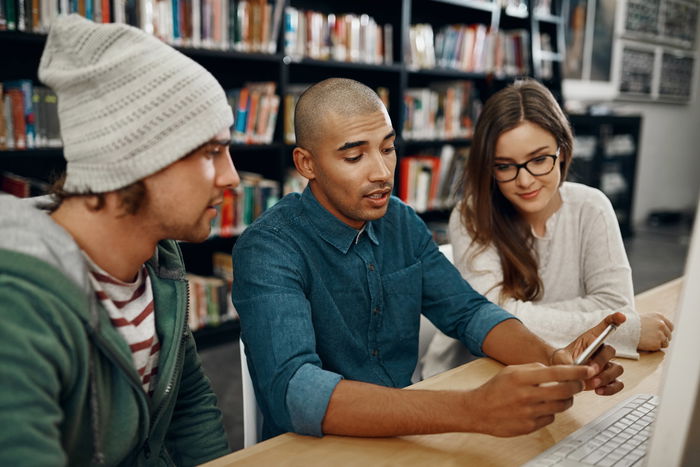
States Must Step Up When Traditional Financial Aid Is Not Enough
December 18, 2018
At a Glance
The financial worries of today’s community college students reach far beyond tuition. To increase individual success, state policymakers and college leaders must broaden the financial help they offer.
With unrelenting tuition hikes and growingdebt loads, the cost of college has dominated headlines and legislative debatesfor years. But the typical community college student is worried about much morethan paying for classes. Many juggle school with work to make ends meet and facedaily concerns about the basics, such as access to adequate food, housing,transportation, child care, and health insurance.
Financial hardship is thenumber-one reason students withdraw from college. And commonpolicy interventions, like freezing tuition rates and awarding “last-dollar”promise scholarships, aren’t instant cures for alleviating their economic woes.
States must find clear, specific ways toconnect more students with the array of financial supports and services theyneed in order to stay in school and earn postsecondary credentials.
JFF considers a range of policy approaches for strengthening students’ financial stability in Supporting Students Along Their Pathways, one of four white papers JFF recently commissioned. The series examines how states fund postsecondary institutions, measure their impact, increase alignment across K–12 and postsecondary education systems, and support students to complete a credential and start a career. The reports reflect the vision of JFF’s Policy Leadership Trust for Student Success and offer ideas for catalyzing change through state and federal policies that encourage the implementation and scale of evidence-based student success reforms.
True affordability means students can pay for food, housing, transportation, child care, and health insurance—not just tuition.
The Staggering Stats for Financially Vulnerable Students
Reframing affordability around overall financial stability recognizes that it’s the total cost of attendance and unmet financial needs that matter most to college persistence and success.
About 79 percent of low-income, first-generation students had unmet financial needs even after receiving all the financial aid for which they were eligible, according to a 2010 study.
A 2018 survey across 66 colleges in 20 states revealed distressing details about financial difficulty among community college students, including:
- 43 percent worried about having enough food,
- 46 percent experienced some level of housing insecurity in a year,
- 12 percent were homeless, and
- 25 percent were parents supporting children.

For these students, working longer hoursto cover education-related expenses beyond tuition is the wrong solution. Infact, it’s no solution at all. Working too many hours makes students less successfulthan their peers in both persistence and academic performance.
We’re not going to be able to ‘food-bank’ our way out of these problems.
Direct services like food banks andtransit vouchers can provide immediate relief. But they’resimply short-term bandages for the systemic insecurities many postsecondary students face.As a member of JFF’s PostsecondaryState Network recently put it, “We’re not going to beable to ‘food-bank’ our way out of these problems.”
States Must Support Students to Get What They Need
States must create comprehensive systemsof financial supports to help community college students succeed. Policymakers andcollege leaders need to find better ways to connect students with availablefinancial resources, such as temporary cash assistance, food stamps, housingvouchers, child care subsidies, and health insurance.
This level of action is imperative. Many studentsare unaware that they qualify for such services, while others have struggled tosecure these benefits because of difficulties navigating bureaucratic systemsor eligibility restrictions. Some avoid seeking help because of associated stigmas.
Actively connecting students to externalsupports requires institutional resources, especially staff time, to assessindividual needs and sustain partnerships with human service providers. Thosecosts are not likely to be reimbursed through traditional enrollment fundingformulas.
Current Financial Aid Programs Are Out of Touch
Meanwhile, the way the federal governmentand states have designed most financial aid programs no longer reflects theneeds and situations of the modern student. Most aid still goes to“traditional” college students who matriculate directly from high school andattend full time. Adult and part-time students often cannot obtain aid due tomethods for determining unmet financial needs, eligibility based on full-timeenrollment, and “first-come, first-serve” disbursement practices.
As a result, financial aid programs areout of reach for people in key populations who, as state officials are aware,need postsecondary credentials in order for states to meet their attainment andeconomic goals. Even among those students who qualify for financial aid,thousands each year withdraw close to graduation when their aid packages rundry.
5 Actions to Strengthen Student Financial Stability
Supporting Students Along Their Pathway makes recommendations for reforming financial aid and expandingaccess to other forms of financial assistance. Here are five provocative yetactionable policy ideas:
- Track and regularly report total cost of attendance and unmet needs togalvanize new policy solutions.
- Target statefinancial aid to students who need it most.
- Ensure aid programsincentivize and support completion.
- Provide greateraccess to public assistance for students.
- Support strongerpartnerships between higher education and human services.
The paper explores each of theserecommendations at length and offers real-life examples. Take a look, and share yourreactions on social media at #JFFPostsecondary.
Related Content

State Policy Paper Series: Strengthening Pathways toward Postsecondary Success
The emphasis in the papers on metrics, money, and systems integration reflects the collective vision of JFF’s Policy Leadership Trust for Student Success on the appropriate role of policy in catalyzing change among systems and…

Thinking Big about Student Success
*Thinking Big* consolidates JFF's research into the most effective processes for scaling up new approaches that promote student success in community college.
